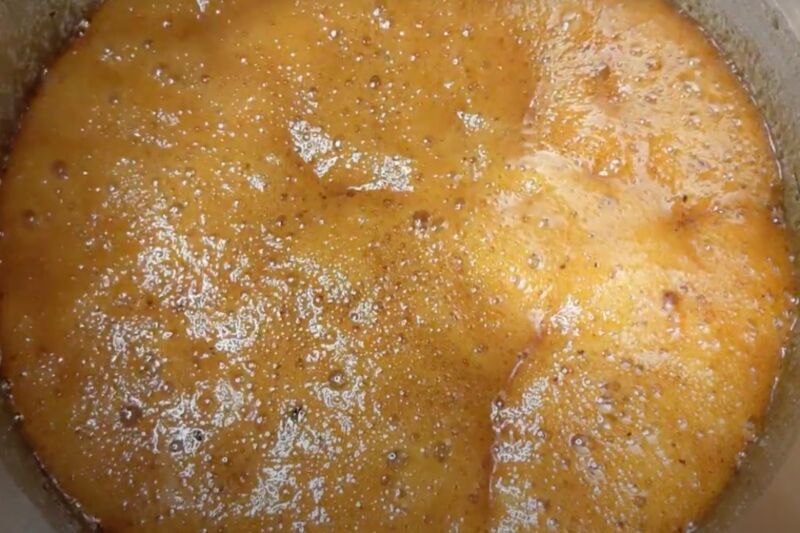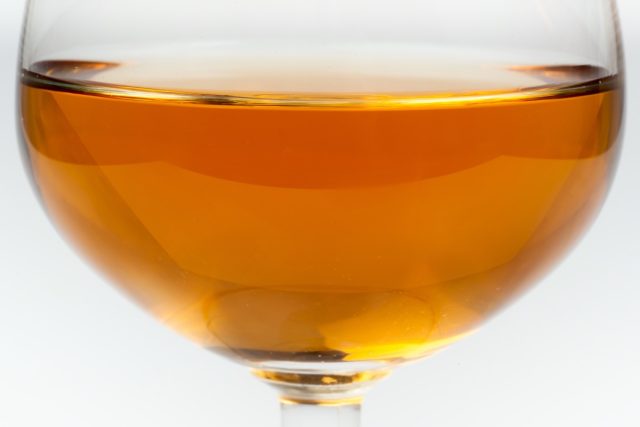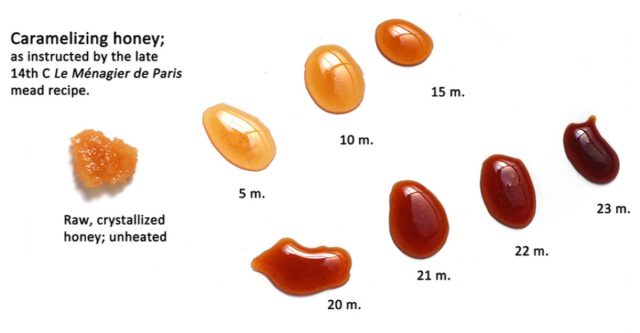[ad_1]

Ah, mead, that candy, honeyed alcoholic beverage that has been a staple at Renaissance Fairs for many years (together with giant turkey legs). It is also more and more common amongst dwelling craft brewers because it’s comparatively simple to make. These seeking a novel problem, nevertheless, are turning to a particular type of medieval mead referred to as bochet. The one recognized detailed recipe for bochet dates again to the late 14th century and was misplaced for hundreds of years, till it was rediscovered round 2009.
Fermentation generally has been round for millennia, and mead (“fermented honey drink”) particularly was brewed all through historical Europe, Africa, and Asia. Maybe the earliest recognized reference to such a beverage (soma) is present in a sacred Vedic e book referred to as the Rigveda, circa 1700-1100 BCE. Mead was the drink of alternative in historical Greece; Danish warriors within the Previous English epic poem Beowulf cavort in King Hrothgar’s mead hall; the Welsh bard Taliesin (circa 550 CE) is credited with composing a “Music of Mead”; and mead options closely in Norse mythology.
There are numerous completely different types of mead from all around the world. However bochet is a particular selection as a result of it requires caramelized honey; extra spices are elective. This makes it engaging to craft brewers in search of one thing a bit of bit completely different—brewers like Gemma Tarlach, who recently detailed her experiments making bochet in a captivating article for Atlas Obscura.
Tarlach was eager to be as traditionally correct as doable, and whereas researching, got here throughout a 2020 paper by impartial researcher Susan Verlag. Verlag is a beekeeper and mead maker desirous about recreating historic drinks, taking the suitable historic context under consideration. “The fashionable recreations of historic drinks typically appears influenced extra by poplar assumption than by historic scholarship,” Verlag wrote in her paper.

iStock/Getty Photographs
Verlag discovered the earliest full recipe for bochet in a 1393 French assortment of recipes, Le Menagier de Paris. That recipe started circulating extensively amongst craft brewers after the 2009 publication of The Good Wife’s Guide: a Medieval Household Book, a translation of the unique treatise. Listed below are the translated directions, per Verberg’s paper:
Bochet. To make 6 septiers of bochet, take 6 quarts of positive, delicate honey and put it in a cauldron on the fireplace to boil. Hold stirring till it stops swelling and it has bubbles like small blisters that burst, giving off a bit of blackish steam. Then add 7 septiers of water and boil till all of it reduces to six septiers, stirring always. Put it in a bath to chill to lukewarm, and pressure via a material. Decant right into a keg and add one pint of brewer’s yeast, for that’s what makes it piquant—though in case you use bread leaven, the flavour is simply nearly as good, however the coloration shall be paler. Cowl nicely and warmly in order that it ferments. And for an excellent higher model, add an oz of ginger, lengthy pepper, grains of paradise, and cloves in equal quantities, apart from the cloves of which there must be much less; put them in a linen bag and toss into the keg. Two or three days later, when the bochet smells spicy and is tangy sufficient, take away the spice sachet, wring it out, and put it in one other barrel you could have underway. Thus you possibly can reuse these spices as much as 3 or 4 instances (Greco and Rose, 2009, p.325).
In line with Verberg, a lot of the bochet being brewed as we speak follows this primary recipe, though she cites a handful of different recipes courting from 1385 to 1725 which might be a vaguer as as to whether caramelized honey (and even fermentation) is required. Verberg means that the medieval definition of what constituted a real bochet was far much less inflexible than how it’s at the moment outlined: as a mead flavored with caramelized honey.
“The defining options of an historic bochet are it’s made by boiling sweetened water with spices and letting the concoction slowly calm down, infusing into a beautiful tasty beverage,” she wrote, including that based mostly on her analysis, “It’s doubtless the beverage developed all through the ages from an alcoholic spiced honey drink to a non-alcoholic sweetened and spiced tisane.”

Susan Verberg, EXARC Journal, 2020
One of many first issues Gemma Tarlach did whereas conducting her personal bochet experiments was to reply the burning query: what the heck is a “septier”? She dug via Parisian archives and concluded {that a} septier is roughly equal to about 4 gallons. If one follows the 1393 recipe, that interprets right into a honey-to-water ratio of 1 quart of honey (about three kilos) to 4 kilos of water. Nevertheless, “Most trendy interpretations name for a ratio of 3-4 kilos of honey per gallon of water,” she wrote—4 instances the honey because the 1393 model.
Tarlach had quick access to uncooked honey, since she can also be a beekeeper. From Verlag, she discovered that medieval mead makers did not extract the honey from the wax comb the way in which beekeepers do as we speak. As a substitute, they crushed the comb, which meant that medieval honey contained each beeswax and some squished bees. So that is what Terlach did, utilizing the comb of a lifeless colony.
It was additionally difficult to seek out traditionally applicable yeast for the fermentation. Most trendy mead makers use industrial wine yeast, per Tarlach, however the 1393 recipe referred to as for beer or bread yeast. Tarlach opted for a number of completely different industrial ale-brewing yeasts for her experimental batches, together with one batch utilizing a white wine yeast selection, plus a batch utilizing wild yeast. As a substitute of utilizing a lab-derived nutrient powder to kick-start the yeast, she added a couple of natural raisins, reasoning that medieval mead makers would have had entry to dried fruit.
The caramelization course of is the trickiest step. You want a really massive inventory pot (except you occur to have a really massive cauldron at hand), since honey can double and even triple in quantity when it is heated. Screw up the method, and also you may find yourself burned by a “sugar volcano” when the honey concoction explodes. And since boiling sugar adheres to the pores and skin (not like boiling water), these burns may be extreme. It is also vital to not lean over the pot as soon as the honey begins effervescent, as this could scald your eyeballs.
Bochet must age for a couple of 12 months, so the ultimate verdict will not be pronounced till then. However Tarlach proclaimed her experiments a success after sampling a few of the month-old batches whereas she was transferring them to new jars:
They had been thinner in physique and fewer candy than different meads I’ve made, due to the decrease ratio of honey-to-water. The completely different yeasts gave every micro-batch its personal distinct character, from a bone-dry, astringent drink made with white wine yeast to the sweeter and smoother concoction that used English ale-style yeast. The Kveik’s dominant notes had been bitter and medicinal—maybe applicable, since Verberg’s analysis suggests bochet could have been drunk to steadiness one’s humors. The wild yeast pressure was milder total, much like the English ale–type however not as candy…. All of them style of caramel, honey, and historical past.
These desirous about attempting their hand at their very own batch of bochet can discover Tarlach’s full tailored recipe here. Simply you’ll want to use a big pot “not less than 3 times bigger than the amount of the honey” in the course of the caramelization step, lest you find yourself scalded by the dreaded sugar volcano.
[ad_2]
Source link







